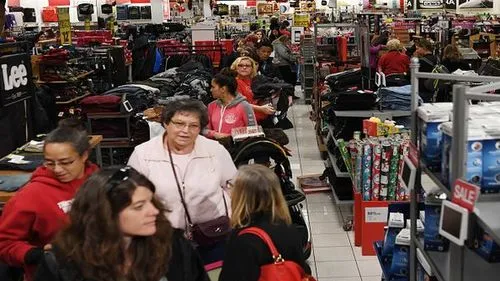In a recent announcement, the French government unveiled a groundbreaking rule aimed at combating the deceptive practice of shrinkflation.
This practice, whereby products decrease in size while maintaining the same price or even increasing in cost, has long been a source of discontent among consumers worldwide.
Finance Minister Bruno Le Maire, in a bold move towards transparency and consumer protection, revealed that starting from July 1, retailers will be obligated to inform customers of any instances of shrinkflation.
Describing shrinkflation as a “scam,” Le Maire emphasized the necessity for consumers to comprehend the genuine price fluctuations of products when alterations in size occur.
The new regulation mandates that medium to large supermarkets prominently display information regarding the price per unit and any modifications in quantity alongside affected products.
These details must be clearly visible as signage on store shelves for a period of two months following any adjustments to a product, encompassing a wide array of goods such as food and household items.
However, exceptions will be made for unpackaged food items and bulk goods, as outlined by the Finance Ministry.
The primary focus of the French government in implementing this rule revolves around safeguarding consumer interests.
Encouraging consumers to report any discrepancies they observe through France’s SignalConso website or app, the initiative underscores the significance of empowering individuals to make informed purchasing decisions.
This move has been warmly received by consumer advocacy groups, with Camille Dorioz, campaign director at Foodwatch France, expressing approval for the government’s intervention in addressing the issue of shrinkflation.

Dorioz highlighted the insidious nature of shrinkflation, characterizing it as a surreptitious practice that undermines consumer trust.
In a climate where financial constraints are prevalent and prices continue to escalate, the need for regulatory intervention to protect consumers from such deceptive tactics is more pressing than ever.
By enforcing this regulation, France is not only upholding consumer rights but also aligning with broader European legislation that prohibits misleading packaging and products.
The subtle nature of shrinkflation often goes unnoticed by the average shopper, with minor reductions in product size easily slipping under the radar.
However, as Dorioz pointed out, these seemingly negligible changes can accumulate over time, resulting in significant financial implications for consumers.
By shedding light on instances of shrinkflation and prompting consumer awareness, the new rule aims to empower individuals to make informed choices and hold retailers accountable for transparent pricing practices.
In conclusion, France’s proactive stance in addressing the issue of shrinkflation sets a precedent for consumer protection and transparency in the retail industry.
By championing the rights of consumers and promoting accountability among retailers, the government’s initiative signifies a significant step towards fostering trust and integrity in the marketplace.
As the global community grapples with economic challenges and evolving consumer trends, initiatives such as these play a crucial role in safeguarding consumer interests and promoting a fair and equitable trading environment.
Retailers are voicing concerns about the new rules that have been proposed, stating that they will be difficult to implement and that the responsibility should fall on manufacturers instead.
This sentiment was echoed by Dominique Schelcher, the head of the supermarket chain Systeme U, who expressed his thoughts on the matter in a post on X.
Schelcher acknowledged the need to address shrinkflation, a phenomenon where the size of products decreases while prices remain the same, but questioned why retailers were being tasked with enforcing these regulations when manufacturers possess the necessary data.
The debate surrounding shrinkflation has not been limited to retailers and manufacturers, as it has also become a topic of discussion in the U.S. presidential campaign.
President Joe Biden highlighted shrinkflation during his State of the Union speech, using it as a part of a larger strategy to reshape how voters perceive the economy leading up to the November election.
This issue has garnered attention globally, with Angela Charlton in Paris contributing to the conversation.
The concerns raised by retailers about the implementation of these new rules are valid and warrant further consideration.
It is understandable that retailers would find it challenging to enforce regulations related to shrinkflation, as they may not have direct control over the sizing and pricing of products.
Placing the burden on manufacturers, who have access to the necessary data and resources to address shrinkflation at its source, seems like a more logical approach.
By shifting the responsibility to manufacturers, the issue of shrinkflation can be tackled more effectively and efficiently. Manufacturers have the ability to monitor and adjust the size of their products in response to market trends and consumer demand.
They also have the power to ensure that prices accurately reflect the value of the goods being sold. By holding manufacturers accountable for addressing shrinkflation, retailers can focus on their core responsibilities of providing quality products and services to consumers.
In conclusion, the concerns raised by retailers regarding the new rules on shrinkflation are valid and should be taken into consideration.

By placing the burden on manufacturers to address shrinkflation, retailers can focus on their primary role of serving consumers.
This approach will not only benefit retailers and manufacturers, but also consumers who deserve transparency and fairness in the marketplace.
It is important for all stakeholders to work together to find a solution that addresses shrinkflation effectively and promotes a healthy and competitive retail environment.
